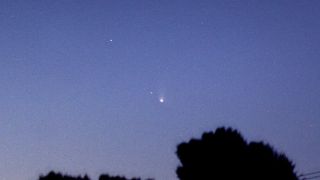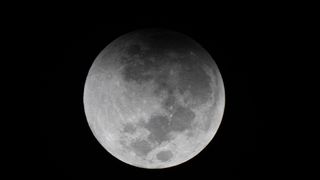
Joe Rao
Joe Rao is Space.com's skywatching columnist, as well as a veteran meteorologist and eclipse chaser who also serves as an instructor and guest lecturer at New York's Hayden Planetarium. He writes about astronomy for Natural History magazine, Sky & Telescope and other publications. Joe is an 8-time Emmy-nominated meteorologist who served the Putnam Valley region of New York for over 21 years. You can find him on Twitter and YouTube tracking lunar and solar eclipses, meteor showers and more. To find out Joe's latest project, visit him on Twitter.
Latest articles by Joe Rao
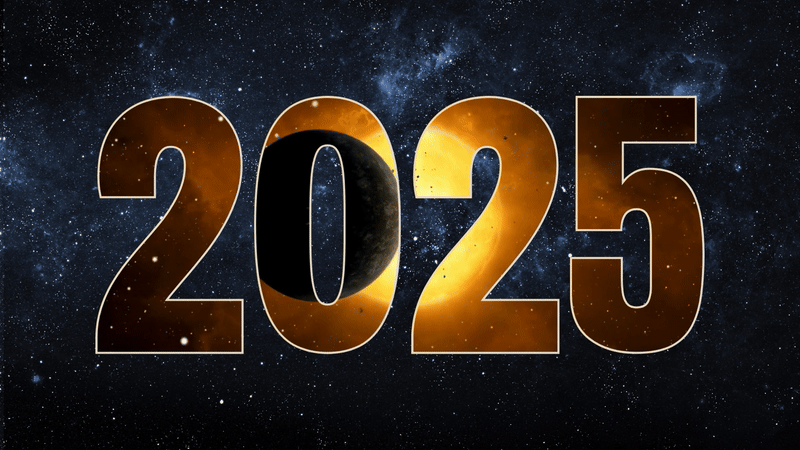
Venus, Mars and more: How to see planets in the night sky in 2025
By Joe Rao published
Your guide to viewing the visible planets of the solar system in the night sky of 2025.
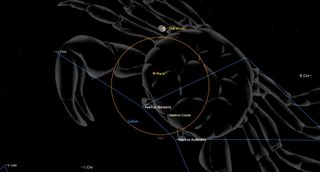
See the moon meet up with Mars this in the night sky tonight
By Joe Rao published
On Dec. 17, the moon and Mars will appear close together in the night sky in the Gemini constellation.
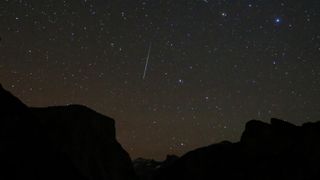
Geminid meteor shower peaks Dec. 13 alongside a bright moon. Here's how to see it
By Joe Rao published
The December Geminids — one of the best meteor showers of the year — will be adversely affected by bright moonlight, appearing the on the night before the full moon.
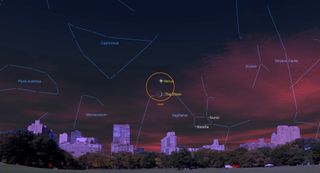
See the moon and Venus take a sunset stroll through the night sky tonight
By Joe Rao published
The two brightest nighttime objects, the moon and the planet Venus put on a lovely display in the western evening sky of Wednesday, Dec. 4.
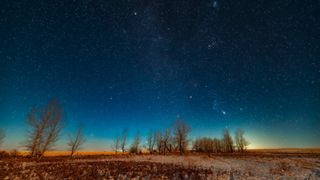
Thanksgiving night sky 2024: Venus, Jupiter and Saturn stay for dessert
By Joe Rao last updated
For Thanksgiving 2024, we have a celestial feast as three bright planets shine prominently during the early evening hours: Saturn , Jupiter and Venus.
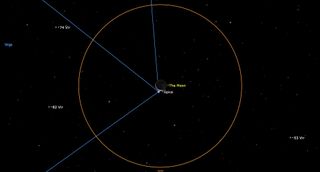
The moon eclipses bright blue star Spica early on Nov. 27. Here's how to see it
By Joe Rao last updated
A waning crescent moon will creep closer and closer to Spica until the star's light is extinguished in the blink of an eye on the morning of Wednesday, Nov. 27.
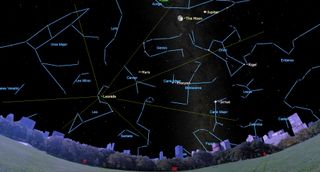
The Leonid meteor shower peaks is peaking now. Are 'shooting stars' in the forecast for 2024?
By Joe Rao last updated
The annual Leonid meteor shower peaks on Nov. 17, 2024, but a bright moon just two days past full will make viewing this year's Leonids difficult.
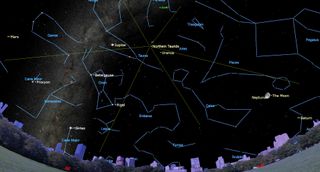
Don't miss the Taurid meteor shower peak with colorful fireballs and shooting stars tonight
By Joe Rao last updated
The Southern Taurid meteor shower reaches its peak Nov. 12. Here's how to maximize your chances of seeing a colorful fireball from this shower.
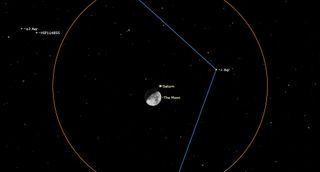
Saturn and the moon put on a celestial show Sunday night. Here's how to see it
By Joe Rao published
Saturn gets close to the moon tonight, and some skywatchers in Florida, Central America and South America will see the ringed planet briefly disappear behind our lunar companion.
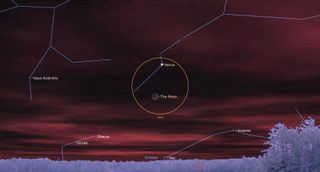
See the moon snuggle up to Venus after sunset tonight
By Joe Rao published
Monday evening (Nov. 4), the night before Election Day, will bring a lovely celestial display involving the two brightest objects in the nighttime sky: the moon and Venus.
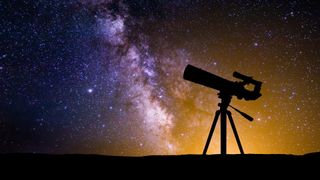
Halloween night sky 2024: See Venus, Saturn and maybe some eerie fireballs tonight!
By Joe Rao last updated
Reference Don't miss these celestial treats this Halloween!
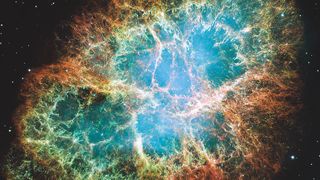
A star exploded almost 1000 years ago and left us with the gorgeous Crab Nebula. Here's how to see it
By Joe Rao published
To see the Crab Nebula for yourself, you'll have to wait until around midnight local daylight time, after it has sufficiently risen high enough above the east-northeast horizon.
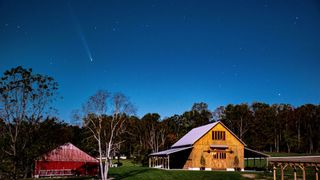
Headless 'Halloween comet' could already be doomed
By Joe Rao published
While some are hoping for a bright "Halloween comet," astronomers say the speeding cosmic snowball has likely already broken apart.
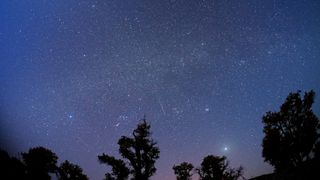
Orionid meteor shower peaks this weekend: How to see bits of Halley's comet burn up in the night sky
By Joe Rao published
The Orionid meteor shower 2024 reaches its peak in the pre-dawn hours on Monday, Oct. 21, but this year a bright moon could make it difficult to see these shooting stars.

Hunter's Supermoon rises this week, the biggest full moon of 2024. Here's how to see it
By Joe Rao published
The largest full moon of 2024 rises this week when the Hunter's Supermoon takes to the sky on Wednesday (Oct. 16), becoming officially full the next morning.
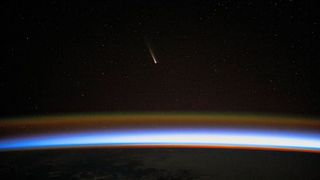
Hopes dim for another bright October comet after Tsuchinshan-ATLAS
By Joe Rao published
There's been talk of another spectacular comet putting on a show in our sky after Tsuchinshan-ATLAS. Unfortunately, however, it doesn't look like the newcomer will deliver.
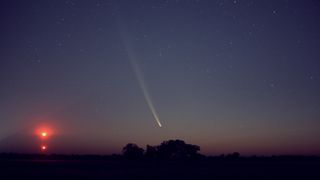
The dazzling Comet Tsuchinshan-ATLAS is emerging in the night sky: How to see it
By Joe Rao published
Scientists are excited to begin capturing Comet Tsuchinshan-ATLAS as the object is expected to soon be very bright in the night sky.
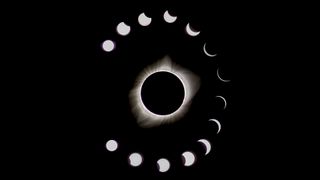
What is a solar eclipse?
By Daisy Dobrijevic last updated
Reference A solar eclipse occurs when the moon positions itself between Earth and the sun, casting a shadow over Earth. We explore the type of solar eclipses here.
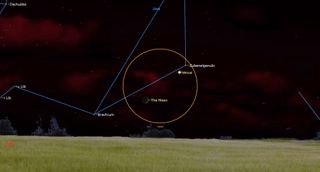
See Venus rendezvous with the crescent moon in the night sky tonight (Oct. 5)
By Joe Rao published
These Venus-moon conjunctions occur on roughly a monthly schedule.
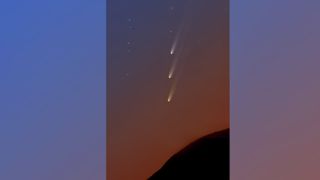
Comet Tsuchinshan-ATLAS may dazzle this weekend. But is the best yet to come?
By Joe Rao published
Comet Tsuchinshan-ATLAS will have a close encounter with the sun today (Sept. 27) here's how to make the most of comet viewing opportunities this weekend and beyond.
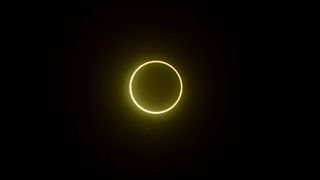
All solar eclipses will be 'rings of fire' in the distant future. Here's why
By Joe Rao last updated
There will come a time 1.21 billion years from now when the phenomenon of a total eclipse of the sun will become an impossibility.
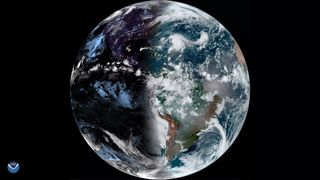
Autumnal equinox 2024 brings fall to the Northern Hemisphere today
By Joe Rao published
The autumnal equinox brings fall to the Northern Hemisphere today as the sun passes directly over the equator at noon. But are day and night actually equal length today?
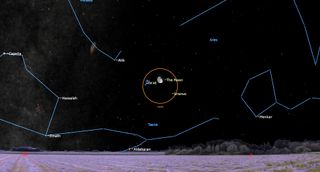
See the moon meet up with the Seven Sisters of the Pleiades this weekend
By Joe Rao published
During the morning hours of Sunday, Sept. 22, skywatchers will be able to watch a waning gibbous moon cross in front of probably the most popular of all the star clusters in the sky: the Pleiades.
Get the Space.com Newsletter
Breaking space news, the latest updates on rocket launches, skywatching events and more!
